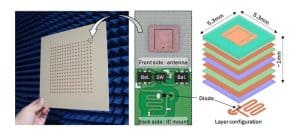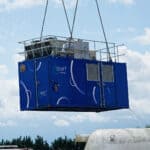The modernization of space activities has led to the emergence of a new hazard: space debris. With more satellite launches in the last two years than in the previous six decades, millions of pieces of space debris are now orbiting in Low Earth Orbit (LEO). This debris, including fragments of spacecraft, defunct satellites, and rocket parts, poses significant risks to both current and future space-based services and operations. Traveling at speeds of 18,000 miles per hour, these objects are a serious threat to safety in space and on Earth.
In response to this growing danger, the European Space Agency (ESA) introduced the Zero Debris initiative at the 2022 Ministerial Conference. This ambitious goal aims to significantly reduce the production of debris in Earth and Lunar orbits by 2030. The initiative includes eight key recommendations, such as ensuring successful disposal of satellites, avoiding in-orbit collisions, improving health monitoring of satellites, and minimizing the impact of space objects on astronomy.
The Zero Debris initiative has garnered strong support from the space community, with over 40 companies, NGOs, and research institutions signing the Zero Debris Charter at the Berlin International Airshow. ESA is also developing a Zero Debris Technical Booklet to outline the technical solutions and contributions necessary to achieve these goals.

A new and surprising hazard has started to emerge as a result of the modernization of space activities: space debris.
More satellite launches have occurred in the last two years than in the last six decades of space exploration. This implies that in Low Earth Orbit ( LEO ), millions of pieces of space debris are flying.
The majority of space debris consists of people- generated objects, such as pieces of spacecraft, parts of rockets, satellites that are not longer working, or explosions of objects in orbit flying around in space at high speeds.
The growing threat of space debris
Today, around 28, 160 identified objects remain in orbit, which are monitored by the US Space Surveillance Network.
Existing and future space-based services, explorations, and operations pose a safety risk to people and property in space and on Earth because of the rate of debris flow and the volume of debris in LEO.
The majority of space debris travels at speeds of 18, 000 miles per hour, which is nearly seven times the rate of a bullet.
Existing and future space-based services, explorations, and operations pose a safety risk to people and property in space and on Earth because of the rate of debris flow and the volume of debris in LEO.
What initiatives are still being taken to address this problem, then?
The ESA Zero Debris Initiative
Member States encouraged ESA to use a Zero Debris approach for its missions and to encourage partners and other actors to follow identical paths at the Ministerial Conference of 2022.
With the introduction of the” Zero Debris approach,” ESA has taken the lead in space sustainability after a decade of creative work.
This is a strong goal: significantly limit the production of debris in Earth and Lunar orbits by 2030 for all future missions, programmes, and activities.

Eight recommendations for a space debris-free environment by 2030 were made by the Agency. They are:
- Guarantee successful disposal: A mission’s launch should be confirmed in advance of a mission’s launch, with a higher than a predetermined minimum threshold for the possibility of” self disposal” through atmospheric re-entry or re-orbitalization to a safe altitude.
- Improved rotational clearance: The shorter an object is in orbit, the less likely it is that it will collide with another object and fall into the debris.
- Avoid in- orbit collisions: Superior collision avoidance strategies – using automation, traffic coordination, communication protocols and more – are needed as the risk of collision increases.
- Avoid inner breakdowns: Improved health monitoring and strong passivation techniques should be used to stop satellites from forming from within.
- Avoid the intentional release of any “mission Related Objects” such as protecting covers, lens caps, or rocket fairings: recommendations are made to prevent more debris growth.
- Improve on-ground casualty risk assessment: Standardized tools and methods should be developed to assess the casualty risk of re-entering objects on the ground and verifying missions ‘ demise assessments.
- To maintain dark and silent skies, measures should be identified and put in place to minimize the impact of space objects on optical and thermal astronomy as well as radio astronomy.
- Beyond the protected regions: Other orbits, such as those used by Global Navigation Satellite System ( GNSS) constellations and lunar orbits, should also be considered and protected to ensure their long- term sustainability.
LEO support for removing trash
Only this month, ESA announced that over 40 companies, NGOs, and research institutions have signed the Zero Debris Charter at the Berlin International Airshow.
The Zero Debris Charter initiative has received strong support from the space community.
12 European nations just became the first to ratify the Zero Debris Charter at the ESA/EU Space Council in Brussels along with ESA.
In the upcoming months, more than 100 organizations around the world have registered their intentions to join the collaboration, including dozens of them signing the Zero Debris Charter today.
The future of zero debris
There will be additional opportunities for organizations to sign the charter at different events in the future months.
Additionally, the Zero Debris Charter’s objectives and guiding principles are being transformed into practical, tangible complex goals. To meet the ambitious Zero Debris goals, novel technologies will be developed.
ESA is assisting in the development of a Zero Debris Technical Booklet at the community’s request.
Volunteers will work together to create the Zero Debris Technical Booklet, a complete list of the requirements, technical solutions, and contributions made through crowdsourcing.












